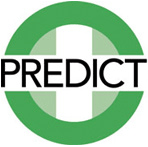Study of Neck Injury Imaging in Children (SONIC): Improving the Diagnosis of Spinal Cord, Bone and Ligament Injuries
Many children sustain head and neck trauma during their lifetime. Significant neck injuries – to spinal cord, neck bones and connecting ligaments – can be identified by performing neck imaging with x-rays, or, if needed, computed tomography or magnetic resonance imaging. Yet, it is unclear which children should receive neck imaging in the emergency department (ED), especially in the context of increasing concerns about radiation-induced cancer in children and the discomfort and delays of immobilisation prior to imaging.
This study aims to:
(i) investigate the accuracy of existing neck injury clinical decision rules (CDRs) to detect neck injuries in children (external validation) of adult focussed CDRs and the newly developed paediatric PECARN CDR
(ii) derive and validate a new CDR for neck imaging in children (the SONIC CDR),
(iii) assess the cost implications of different CDRs in children.
(iv) investigate the epidemiology of cervical spine injuries in ANZ
Study design:
Multicentre, prospective observational study.
Timeframe:
2020 – 2025
Sites:
- Royal Children’s Hospital, Melbourne (VIC)
- Monash Children’s Hospital, Melbourne (VIC)
- Queensland Children’s Hospital (QLD)
- Logan Hospital (QLD)
- Sunshine Coast University Hospital (QLD)
- Gold Coast University Hospital (QLD)
- Perth Children’s Hospital, Perth (WA)
- Children’s Hospital at Westmead (NSW)
- Sydney Children’s Hospital (NSW)
- Women’s and Children’s Hospital, Adelaide (SA)
- Darwin Hospital (NT)
- Kids First, Auckland (NZ)
- Starship Children’s Hospital, Auckland (NZ)
Sample:
PREDICT ~30,000 (depending on prevalence of injuries), children aged <16 yrs with possible neck injury.
News:
We are currently finalising the ethics approval which includes waiver of consent for enrolment and data collection and verbal consent required only for telephone/text/email follow up. Development of the CRFs and Redcap data base is underway in view of a rolling study commencement to begin in May.

